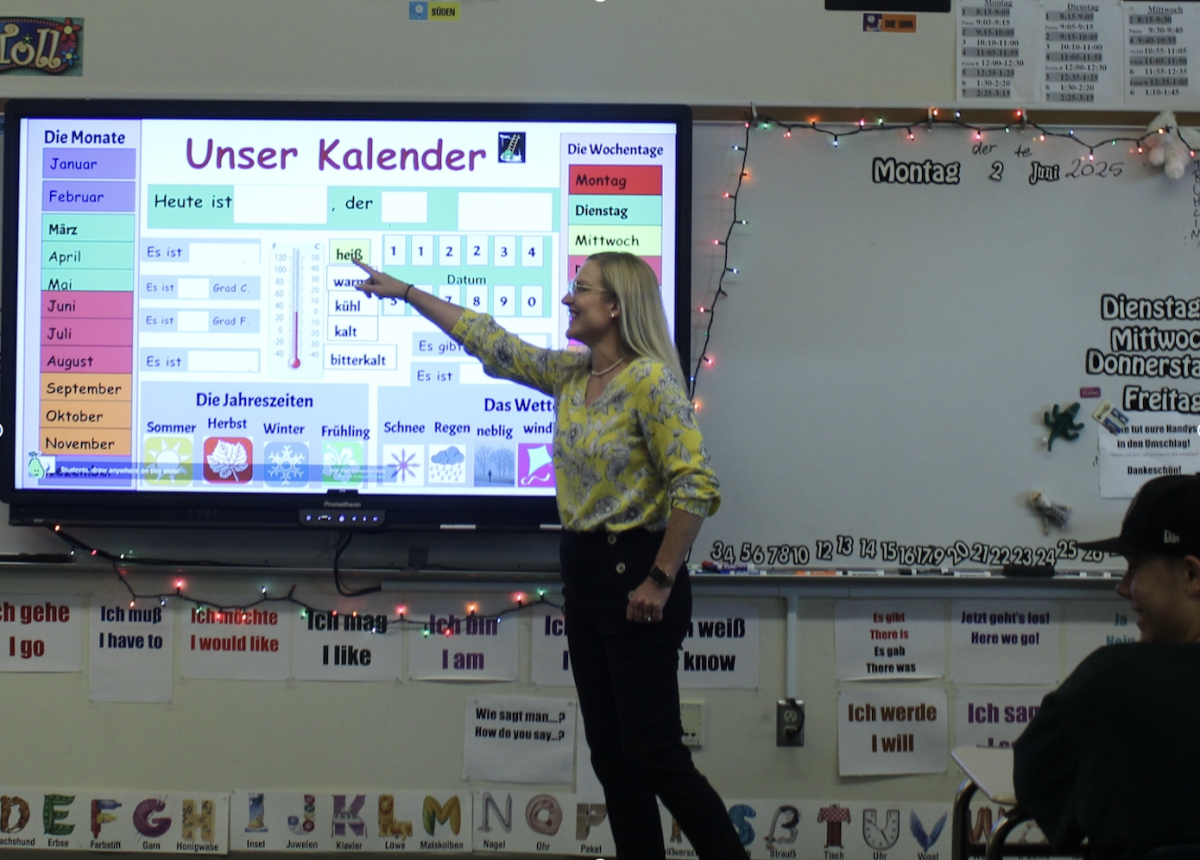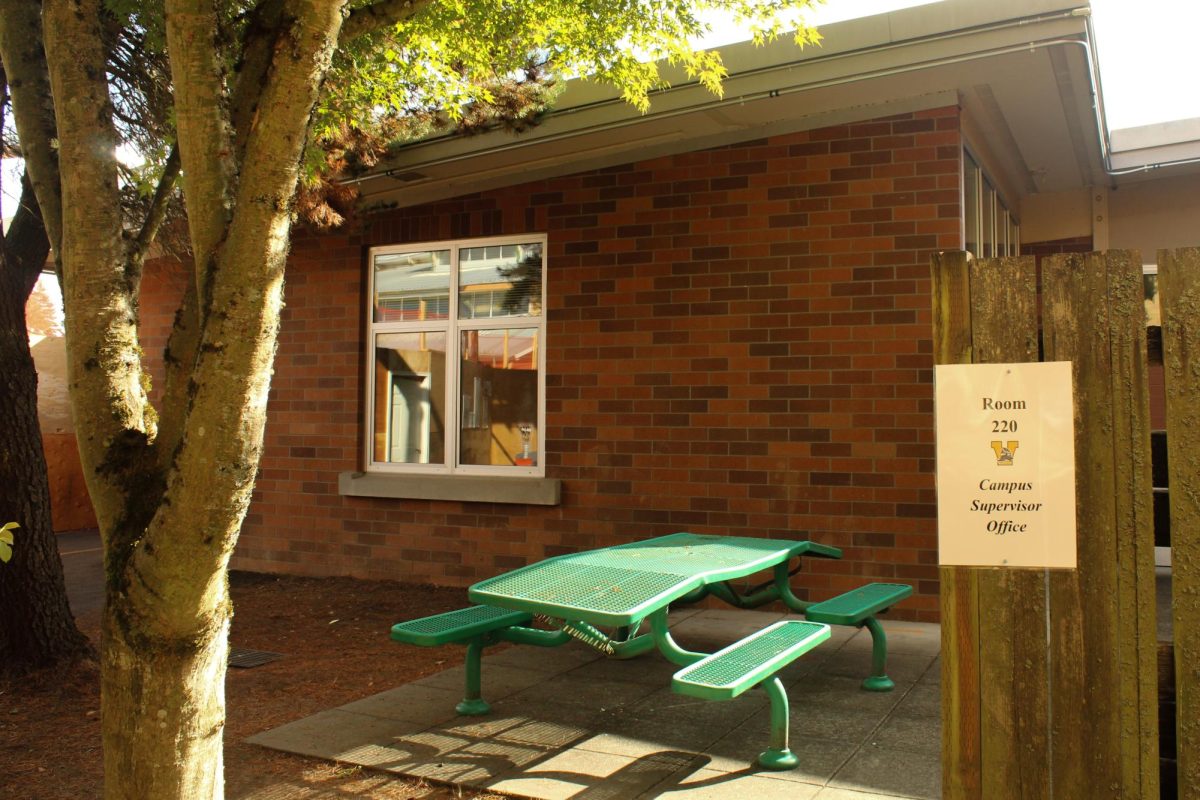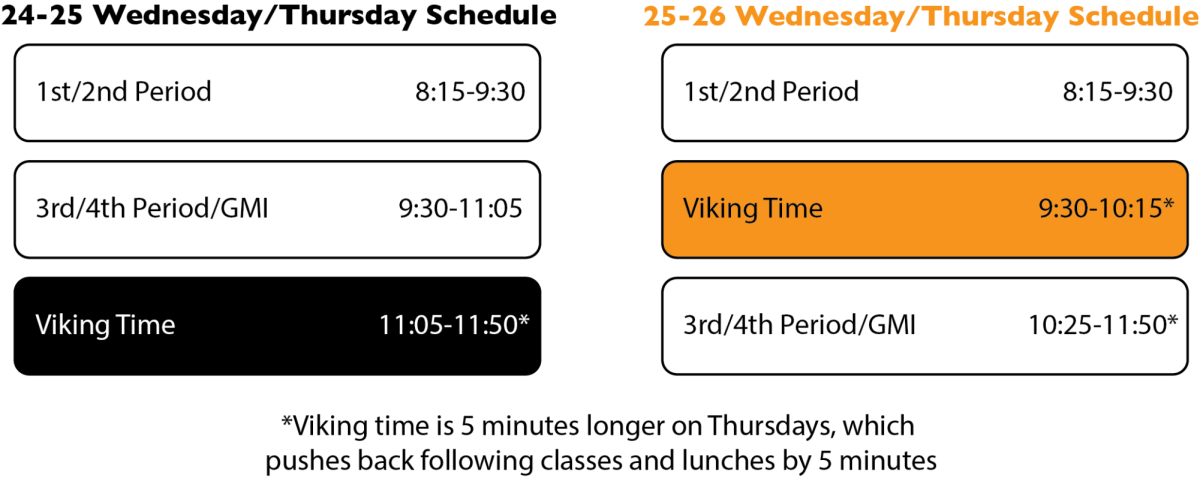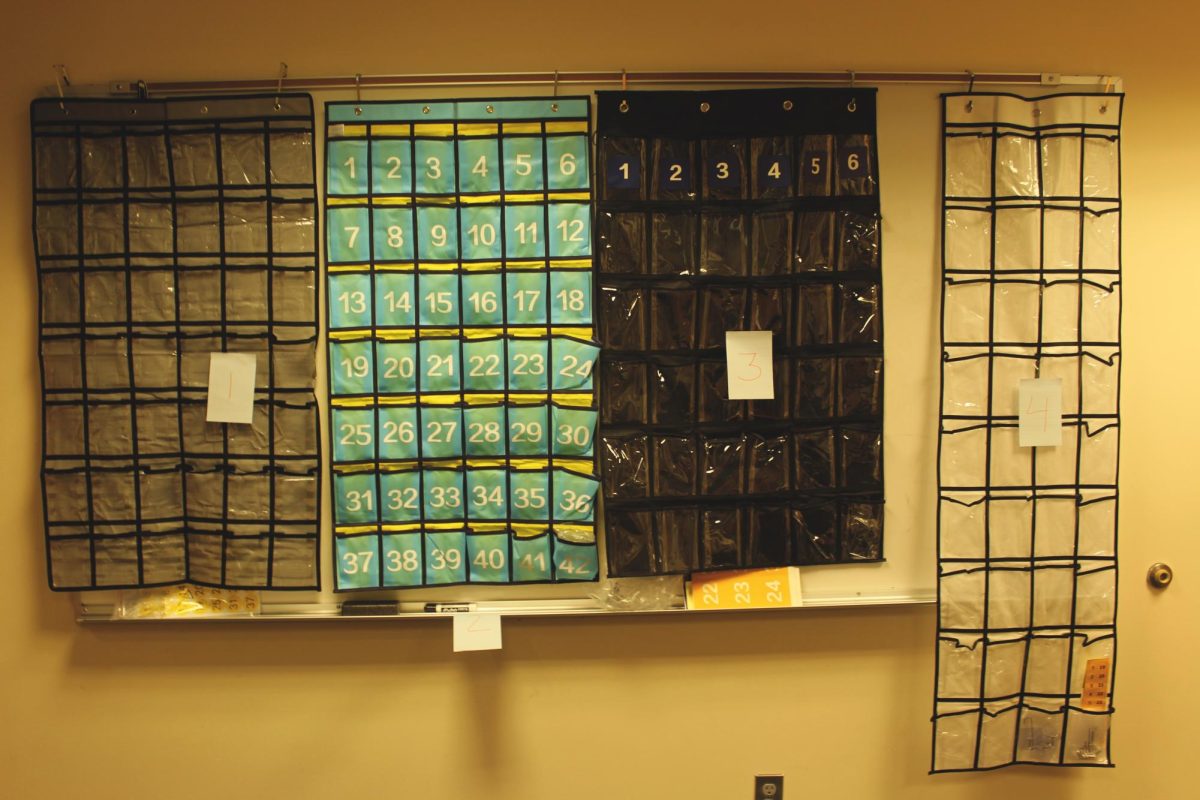As of October 1, 2024, NSD forecast a six million dollar spending deficit, prompting solutions that include combining language classes of different levels. With all language classes moving into portables next year, this may create a more challenging system for education. While the district is working on ways to mitigate the potential drawbacks of the situation, no solutions have been publicly provided yet. This is the first time such massive changes have swept language classes, said German teacher Katrin Vince (she/her).
On May 13, numerous language students protested in room 701 when Superintendent Tolley visited Inglemoor. Tolley was informed he would be watching a German lesson but instead encountered 50 students — each with a desk, chair and backpack — crammed into a classroom in a display of frustration with the large class sizes proposed for next year.
“That day, we had 50 students,” said Vince. “Yes, people are upset about it. I’ve not heard anybody going, ‘Yay, huge classes.’ Again, I think it’s going to be really stressful for students.”
Vince said that larger class sizes would make it difficult to keep a class on track, and that there would not be enough resources to support each period. She added that the increase of class sizes prevents bigger projects like presentations since it would take up too much class time.
“I used to have a class of 23. Now I have a class of 46, so it’s going to take me twice as long to grade the work that’s turned in to me,” Vince said. “The more people you have to manage, the more difficult it will be for kids to focus.”
The lack of available space in the portables presents a serious concern for Vince as well, who said that her classes may have 46 to 50 students, a figure she believes is unsafe for the portables.
Chinese teacher Li Haining (she/her) said that language classes are unique in their method of teaching, and smaller classes are essential to this.
“Language classes are different from other classes. We need lots of interactions, right? We need to give students lots of opportunities to speak, to talk,” Haining said. “We need lots of interactions, so big sizes are not good for language learning.”
Haining said the combination of class levels will make it much more difficult for her to teach and for students to learn effectively. When Haining teaches, she usually sends a portion of the class into a separate room so that there isn’t interference between groups. However, there will not be space to separate different levels in the portables.
“For students, too, you want to focus on your content, your learning content, but if a student and teacher just talk beside you, how can you focus?” Haining said. “I think with 300, 400, 500 classes, it’s very hard for teachers to provide the education that students deserve. They deserve better.”
When Haining was told about the changes to her classroom sizes, she said it was very disheartening. Haining said the recent cutbacks on the Japanese classes and now Chinese have also frustrated numerous Asian families.
“It’s sending bad messages to Asian families,” Haining said. “I’ve already had parents write me emails, very disappointed. For example, one mom said they moved to the Inglemoor boundary because of the Chinese program.”
Although many language teachers are taking on larger, more difficult class loads, they will actually be teaching fewer periods, thus reducing their working hours.
“From the teacher’s side, when you combine classes, that means you reduce teaching periods, teaching time. That means a reduced salary,” Haining said.
“The work is harder. You still need to prep for two different levels. And then you have to think about, ‘How am I going to teach the two levels?’ So the work actually is more. The pay is half.”
Dr. Justin Irish will be NSD’s new superintendent for the 2025-26 school year. While managing over 20,000 students and millions of dollars in budget and deficit, Haining asks him to simply think about each student and their individual experiences.
“Come to sit in my classroom and feel how the students feel, right?” Haining said. “Let them experience what it’s really like in a classroom.”
While teachers within Inglemoor have had their own experiences with future class size policies, NSD Chief Financial Officer Jolynn Berge (she/her) offered a district-wide, administrative perspective.
“I think there’s a misconception,” said Berge. “The class size increase happened this current school year. There’s no difference in class size for next school year.”
This claim is extremely contradictory to those of the language teachers. Berge also said that the deficit figure projected from October 1, 2024 is no longer what the district projects for the upcoming school year.
“The deficit was the projection for where we were going to be for the 25-26 school year if we didn’t make reductions,” Berge said. “So we have identified those reductions to make. And so right now, we don’t expect to have a deficit for the 25-26 school year any longer.”
Berge said it’s a top priority for NSD to bring class sizes back lower again in the coming years, as they look to increase revenue. In Washington, revenue for school districts comes from government funding based on total student enrollment. Berge said that enrollment for NSD has been consistently declining for the past few years, and thus, NSD’s revenue hasn’t increased. Berge said that the government isn’t doing enough to fund K-12 education across the state, not just NSD.
“Bellevue made a lot of cuts. Districts around us. You’ve seen Seattle in the newspaper where they wanted to close 20 schools — just a lot of districts struggling to balance their budget,” Berge said. “I would say it’s the (government’s) primary duty. We’re the paramount duty of the state. You’ve already been sued once. We don’t want to go back down that road. We don’t need them to. We just want them to do the right thing, and we understand that they’ve had hard times as well. But the Constitution says K-12 is paramount. That means first, and you’re supposed to amply fund K-12 education.”
Projected language class sizes for 2025-26:
French 300/400/500: 47
French 200: 45
German 200: 45
German 300/400: 46
Spanish 300/400/500: 43
*These figures are not finalized and are subject to change. Information was collected from Inglemoor language teachers.

















